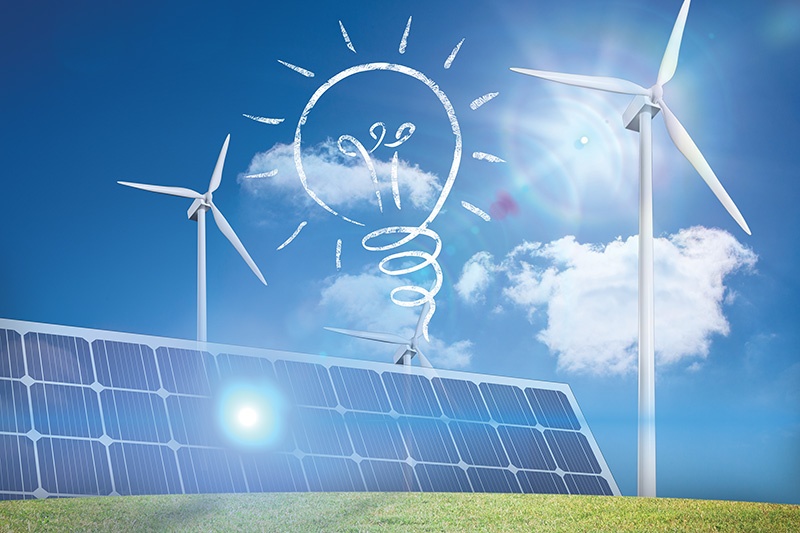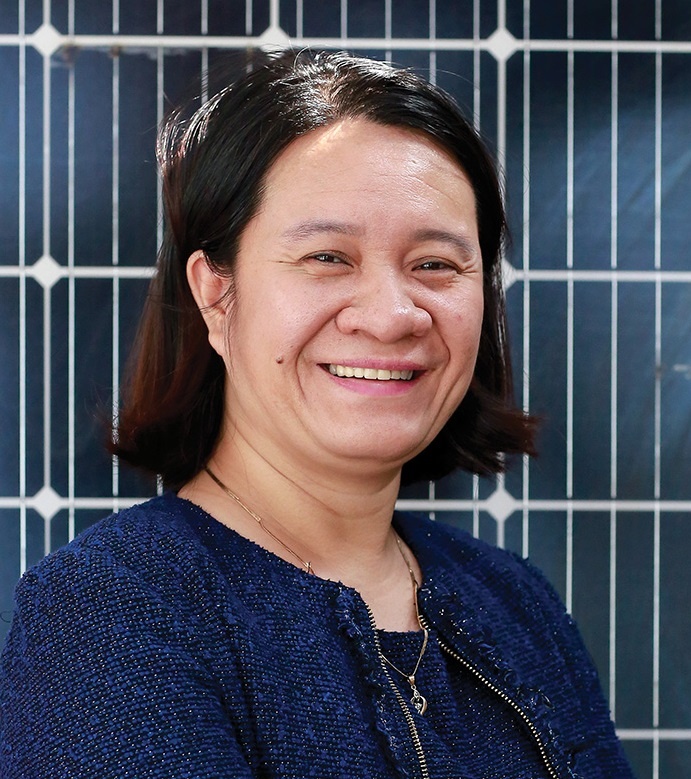Vietnam’s roadmap to decarbonisation
 |
| By John Rockhold - Head, Vietnam Business Forum Power and Energy Group |
An increasing number of bilateral export credits, international financing institutions, and commercial banks have declared coal exit policies after encountering a backlash for having supported this form of high-carbon power project worldwide. Although planned and foreign-invested super-critical coal thermal projects for the near term are financed and underway, other planned coal projects beyond 2022 face extreme difficulties in financing and require direct government investment in construction and imported coal stockpiles.
Resolution No.55-NQ/TW sets the right direction by prioritising renewable and clean energy resources to secure Vietnam’s energy security. The most recent draft of Vietnam’s Power Development Plan (PDP8) for the period 2021-2030 and with a vision to 2045 appears to have some gaps with such a worldwide energy crisis.
Vietnam can achieve its commitments to reduce greenhouse gas emissions through the application of appropriate and timely policies. We recommend that the Ministry of Industry and Trade increases the share of electricity from renewable energy sources such as solar and wind in PDP8 as a means of reducing dependence on fossil fuels while also investigating a range of carbon taxation policies, including taxation at the source, border adjustment taxes on untaxed fossil fuels, carbon pricing for high carbon industries and sectors, and carbon trading mechanisms.
This combination of policies will help Vietnam to both meet and exceed its emission reduction targets and avoid punitive border adjustment taxes on the carbon embedded in Vietnamese exports. In addition, revenue from carbon taxes can be used to fund research and incentives to support the country’s transition to a low carbon economy. We agree these projects should not be based on subsidies but on real costs and tariffs.
Existing super-critical coal projects should be developed only with the condition that they have signed documents, strategic reserves, fixed long-term coal contracts, and are provided with sufficient financing. We support regular reviews of projects based on developer credibility of financial experience so that they reach the necessary financial bankability of super-critical coal.
Expanded capacity for low-carbon energy transitional solutions can secure the balanced base-load mainly fuelled with Vietnamese offshore gas and imported liquefied natural gas. A geographically-balanced baseload can be developed, assuring related projects have fixed long-term supply contracts with strategic reserves, as details in the latest PDP8 draft seems to have caused concerns regarding power shortages.
Expanding the grid and large-scale wind of 1-3GW can finance needed grid expansion. These actions would contribute to a more stable electricity supply and at the same time, facilitate cleaner energy development with the needed strategic reserves. Starting research on green indigenous hydrogen and iron-saltwater batteries made in Vietnam for future strategic reserves and transitioning toward net zero carbon in 2050 is also required.
 |
| Wind and solar power policies will go some way to helping Vietnam achieve emissions targets, Photo: Freepik.com |
Distributed power solutions such as rooftop solar for direct on-site consumption without the need of transmission should be promoted as an efficient solution for energy security, cheaper energy cost, enhancing the competitiveness of Vietnam export sectors, and attracting overseas funding. Rooftop solar has huge potential and should be clearly differentiated from utility-scale solar.
We support Vietnam containing clearly defined flexibility to allow certain types of energy sources to be pushed ahead of schedule in the likely event that coal power cannot secure financing to build. This will help ensure energy security while complying with the Law on Planning.
Finally, developing a constructive regulatory and permitting environment that attracts needed Vietnamese and foreign investment in cleaner energy generation, grid, and energy efficiency is a must – along with government policy support to the financing sector in order to enable more overseas investment flow into Vietnamese power development.
We look forward to seeing the PDP8 completed and put into action to demonstrate a clear signal of Vietnam’s commitment and continued engagement in tackling the global challenge while creating a harmonious distribution of cleaner, realistic, and implementable power sources to attract the needed private investment and to meet its economic goals.
| By Koos Neefjes - Director, Climate Sense Ltd.
I believe that the most important way forward for solar photovoltaic (PV) in Vietnam must involve farming families, who have been largely left out so far. They live and work where most sunshine and space can be found. Rural men and women must benefit from tech opportunities, which will be good for communities, greenhouse gas emissions reduction, and food production – but it will require special efforts and policy adjustments. Vietnam has experienced a sudden rise in solar PV deployment. Many plants were built, and more than 100,000 solar rooftop systems were installed, especially in the centre and south of the country. The total solar PV installed capacity by the end of 2020 was about 16,500MW, making up a quarter of total power production capacity. Solar PV only produces during daytime and the power grid cannot absorb all power produced during the sunniest hours in areas with weak transmission infrastructure. So Electricity of Vietnam (EVN) cannot off-take all power produced, and some is wasted. That is a loss to investors and to Vietnam. The deployment was driven by profitable feed-in tariffs (FiTs) guaranteed for 20 years, with a deadline of connection to the grid of December 31, 2020. Currently there are no such FiTs for solar PV plants or rooftop systems, as the government is considering the best regulations for future development. This illustrates a feature of the energy transition. Traditionally all electricity is generated by a few very large power plants, running on coal or gas, or large hydro-electric reservoirs. High-voltage transmission cables connect these plants to distribution systems in towns and villages. But solar PV can be built at every scale, from small and large rooftop systems on houses or factories to solar PV plants covering hundreds of hectares of land or water surface. Solar PV plants can be built near any high-voltage transmission line. Small systems can be connected to the low-voltage distribution infrastructure. Thus, such systems are decentralised throughout the grid and production often takes place near consumption. This has implications for further investment in the grid and for management of power demand and supply by EVN. | |
| Nguy Thi Khanh - Executive director Green Innovation and Development Centre
The revised Law on Environmental Protection 2020 has legalised Vietnam’s emissions trading scheme. The law takes effect in 2022, with the Ministry of Natural Resources and Environment drafting a supporting decree on carbon pricing. Recognising that the post-pandemic period is an ideal time to adopt carbon pricing to set the foundations for a green recovery, this policy is expected to strengthen Vietnam’s commitment to greenhouse gas emissions reductions. With the right policies, Vietnam could accelerate the clean energy transition, create jobs, address climate change, and improve public health. To this end, the government should consider several recommendations as follows. First is establishing clear, consistent, and achievable targets for energy development and environmental stewardship for post-pandemic recovery. Second is realising Vietnam’s energy transition by committing to decarbonisation, decentralisation, and digitalisation. Next is internalising environmental and public health costs in fossil fuel generation, phasing out fossil fuel subsidies and halting fossil fuel plants and imports. A wide variety of stakeholders must also be engaged in the energy transition. Energy and environmental policies need to be linked to addressing urgent socioeconomic concerns from the pandemic. Other recommendations include deregulating electricity markets, liberalising the power market, prioritising the needs of vulnerable populations in energy and environmental planning, and channelling the urgency of COVID-19 response to climate, energy, and environmental policies. | |
| Sean Huang - Development manager Copenhagen Offshore Partners
We are happy to see the government is taking action to fight climate change and committed to net zero in the following decades. While the nation is moving away from coal, we believe offshore wind could become a pillar in Vietnam’s energy mix and help Vietnam achieve the goal for net zero and transition to sustainable development envisioned by the country. We hope to see more offshore wind projects joining the energy mix and a plan to build a resilient grid system that could sustain more renewable energies in the coming decades. As an early mover of offshore wind projects globally, we have been working with governments in designing and troubleshooting regulation issues to ensure successful deployment. We would be delighted to see more collaboration between the Vietnamese government and experienced developers to share international experiences for designing regulations, industry mobilisations, and technology transfer. | |
| Nguyen Thu Ngan - Brand director, SolarBK
The era of 4.0 technology is booming. The installation of smart roofs that self-generate power as well as cool and protect the environment is gradually becoming a worldwide trend. The operation of the smart roof is simpler than ever thanks to a monitoring and management system encapsulated in just one mobile device. This year there have been more burdens for businesses, in which electricity and water fees are also a problem. However, some of them reached their targets because they can balance electricity consumption through solar systems. Industrial zones and investors consider the rooftop system as a way to ensure energy and cut carbon for facilities as well as contribute to helping Vietnam realise commitments to greenhouse gas reduction. By choosing to go the long way to a great destination, the challenges are also greater. Still, SolarBK will bravely weather the storm as the company continues to pursue aspirations and reach impressive milestones. | |
| Stephan Andress - Head of development in Asia Wind Tech
This is not only a weather crisis, but also a policy crisis. For other markets, disruptions could be typhoons, and many other environmental, economic, and political factors that could impact the region’s energy markets. The extreme weather may lower renewable energy resources as the energy systems – especially systems that include renewable energy sources – are highly dependent on the weather and climate. But to date, there have been no suitable methods for calculating how future extreme weather events will affect these energy systems. Thus, it is a headache for investors when their capacity is highly dependent on weather conditions, which makes their share in the existing energy system something of a challenge when it comes to reliability and stability. Faced with upcoming climate changes, shaping and optimising an energy system that can coordinate renewable energy sources in the energy supply requires close collaboration between energy system experts and climate researchers. | |
| Bui Viet Phuong - Marketing manager DAT Technology
In the upcoming Power Development Plan, the details must consider climate change and extreme weather to select options for main energy resources and the grid. For instance, in Vietnam, especially in the southern region, the solar energy system is a development trend. The south of Vietnam has an advantage because of high solar radiation as well as a region with a large shortage of on-site power sources, so it is very suitable to invest in rooftop solar power to meet the local electricity demand. The northern and central regions have lower solar radiation along with storms in the central region and winter in the north. However, for those factories using a lot of electricity with high electricity purchase prices (such as consuming more electricity at peak hours, and logistics with high electricity purchase prices) then it is still effective for investment in rooftop solar power. | |
| Ngo Thi To Nhien - Executive director Vietnam Initiative for Energy Transition
In 2021, the dynamics of the solar and wind sector changed for the better, with it moving from tariff-supported growth towards more sustainable market-based dynamics. The wind industry had successfully commissioned about 4GW of capacity – that is as much as South Korea, Thailand, and the Philippines have combined. The solar PV industry moved to rooftop projects for self-consumption in the commercial and industrial sectors. LEGO announced the first carbon-neutral plant in Vietnam. Vietnam’s industrial parks can now offer PV electricity to their customers at competitive prices – those are all reasons to celebrate. In November, Deputy Prime Minister Le Van Thanh stressed the need for a more open approach instead of a specific plan for each region and plant. The past national power development master plans were like engineering blueprints for the electricity system. I think this plan-to-build approach should be replaced by a different metaphor now – future approaches will be a plan-to-drive. There will be more emphasis on the ultimate goals and how to get there. Plan to drive, not plan to build. Another reason to celebrate is Vietnam’s goal to achieve net zero emissions by 2050. This changes everything. If we want to have 100 per cent carbon-free electricity in 30 years, we must grow the share of carbon-free electricity in the mix by 20 per cent every decade, and not just in capacity but in production. Developing offshore wind, energy storage, and electric mobility solutions cannot wait. The energy transition in Vietnam is advancing very fast. Vietnam has regional leadership in solar and onshore wind energy. The long-term vision is set, the short-term objectives need to be revised accordingly. |
What the stars mean:
★ Poor ★ ★ Promising ★★★ Good ★★★★ Very good ★★★★★ Exceptional
Related Contents
Latest News
More News
- Heavy industries set for pilot greenhouse gas quotas (December 25, 2025 | 10:00)
- Swedfund invests in MSME growth and climate action in Vietnam (December 19, 2025 | 11:42)
- GreenYellow brings solar energy to light up remote schools in Tuyen Quang province (December 19, 2025 | 08:00)
- Charge+, Grab partner to develop EV charging network in Vietnam (December 18, 2025 | 17:11)
- Linking sci-tech and innovation to Vietnam’s net-zero future (December 18, 2025 | 14:31)
- Driving double-digit growth through green and circular transformation in Vietnam (December 17, 2025 | 09:00)
- Standard Chartered and ACCA deepen collaboration to develop Vietnam’s talent for a sustainable future (December 15, 2025 | 18:18)
- Schaeffler reports strong early output from Dong Nai solar project (December 12, 2025 | 15:16)
- Forestry conference highlights biodiversity and sustainability goals (December 09, 2025 | 13:35)
- Home Credit honoured among top 10 sustainable companies in trade and services (December 09, 2025 | 12:18)








 Tag:
Tag:




















 Mobile Version
Mobile Version